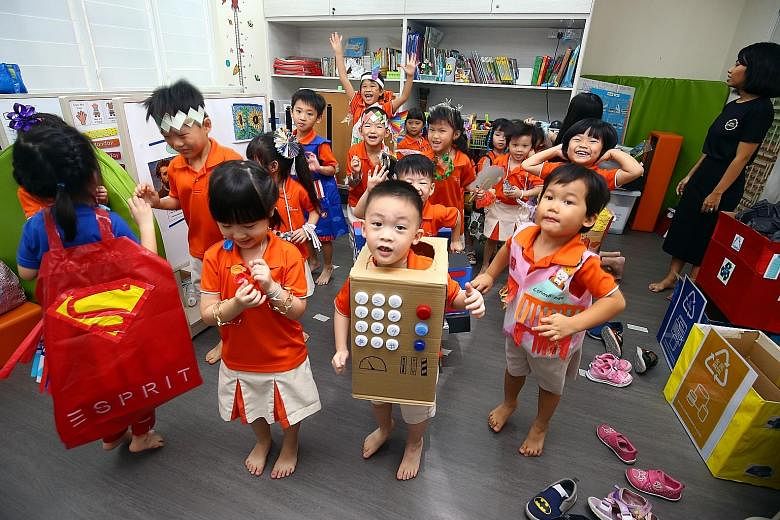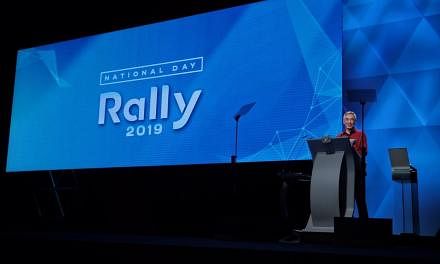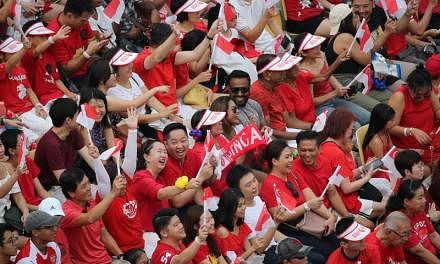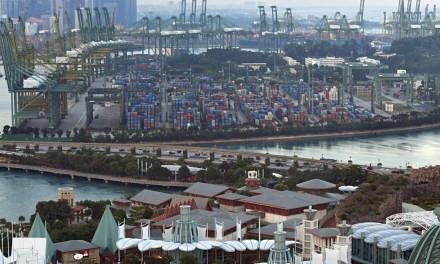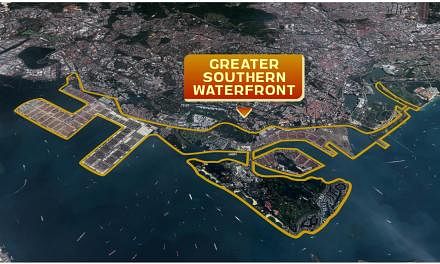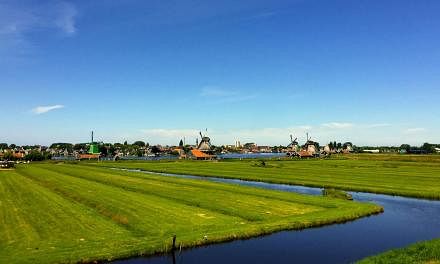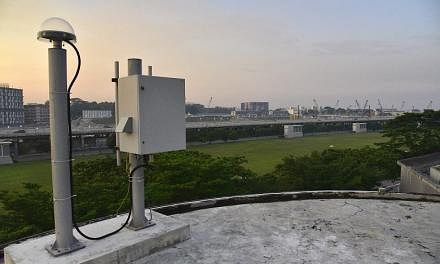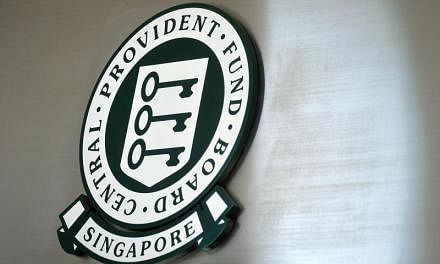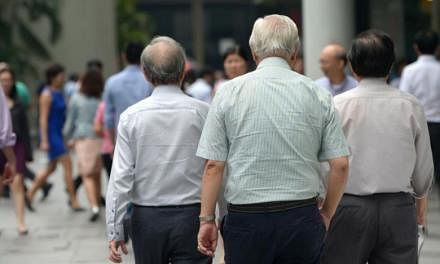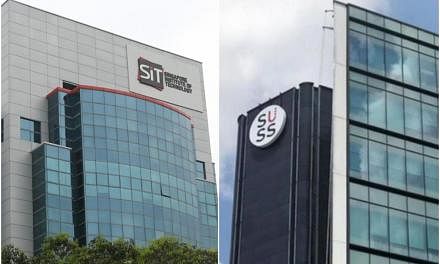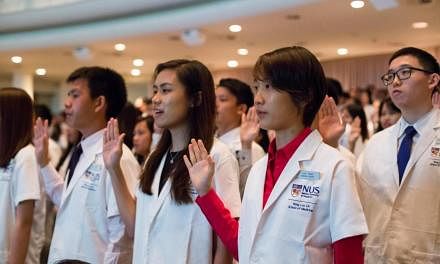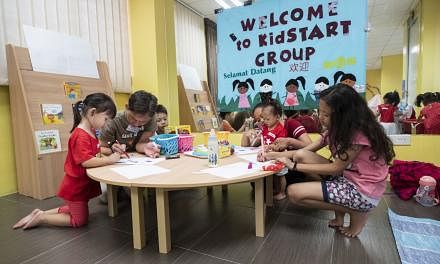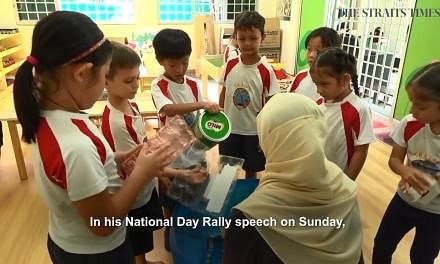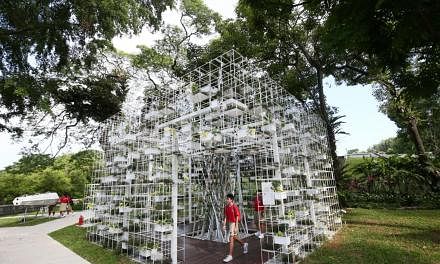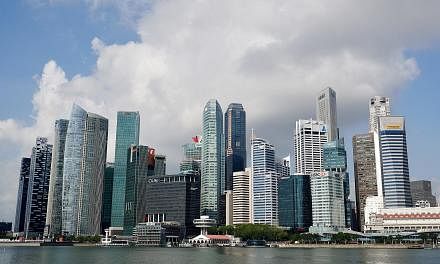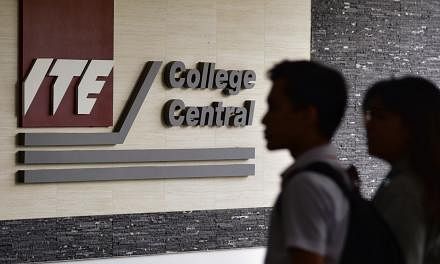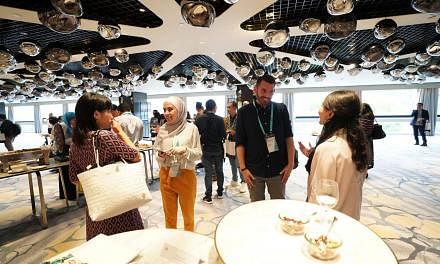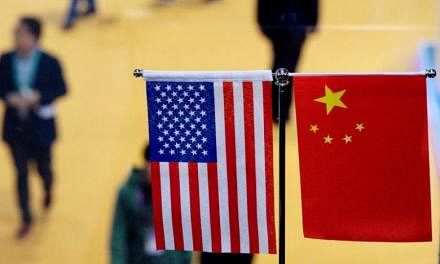INVESTING IN PEOPLE: PRESCHOOLS
Let me start with how we are giving our young the best possible start in life. So that anyone who works hard will have a chance to succeed, regardless of starting point or family background. Because this is what meritocracy in Singapore is about.
We have made good on this promise by investing heavily in education. Our starting point used to be Primary One. School brought everyone up to speed. Not just on academics, but also basic health and development. Generations of children have been through our schools. They received a sound education and good healthcare, and graduated better educated than their parents. Recently, Save The Children, an international NGO, ranked Singapore the best place in the world for a child to grow up in, and last year, the World Bank published a Human Capital Index. This measures the knowledge, skills and health that a child born today can expect to attain by age 18. Among 157 countries, Singapore ranked first.
But we are going further. We want to start earlier in a child's life, because these years make a big difference to his development. Parents play an important role. But a good preschool education can make a crucial difference. That is why several years ago, we made a major shift to improve preschool education. Let me share what we have done so far, and what more we plan to do.
First, we have doubled full-day preschool capacity, to almost 180,000 places. There are enough places for every child aged three and above. Second, we have upgraded the preschools. The new HDB void-deck centres are better designed and appointed. We have built some mega centres too with comprehensive facilities. Third, we set up MOE Kindergartens. By operating kindergartens, MOE gains direct experience, improves curriculum design and ultimately raises standards across the industry. MOE Kindergarten is also a new preschool model. Each MOE Kindergarten is located together with a primary school. Each kindergarten offers all three mother tongue languages, and provides a bilingual environment, just like a primary school. Today, we have 24 MOE Kindergartens, and will more than double the number in the next few years.
Fourth, we are giving preschool teachers better training and career progression. We have set up the National Institute of Early Childhood Development (NIEC) to upgrade training for preschool teachers and raise their standing. NIEC enrolled its first students this year. Fifth, we continue to make preschool more affordable. The Government funds the anchor operators and partner operators, to keep fees down. And all parents receive significant subsidies for childcare, with lower-income parents receiving substantially more.
Still, for middle-income parents, preschool fees can take up a chunk of their household budget. Especially if two or more kids are in preschool at the same time.
Like the Low family, for example. They are middle income. Both parents are working. They have two sons: Kaylen, who is turning five, and Kyler, who is two; both attend a government-supported preschool.
To help families like the Lows, we will enhance preschool subsidies. The Lows currently do not qualify for additional means-tested subsidies, because their household income exceeds the current maximum income, which is $7,500. We will raise the income ceiling to $12,000 per month. This will extend the means-tested subsidies to 30,000 more households, including the Lows. On top of this, we will increase the quantum of preschool subsidies, across the board. Before the changes, Mr and Mrs Low pay about $560 per month for each child's preschool. The enhanced subsidy will knock off a third of their preschool expenses, which will then go down to around $370 per child.
Later on, when Kaylen and Kyler enter primary school, the family's expenses will go down even further. Because primary school itself is almost free - you have to pay a few dollars miscellaneous fees. If the boys need student care after school in the afternoons, it will cost the Lows about $300 per child. So it is even lower than the $370 that they will be paying after the enhanced subsidies.
In the medium term, we aim to bring down full-day preschool expenses to around that level - which means the cost of primary school plus after-school care is $370, coming down to around $300. Recently, several PAP women Members of Parliament made an important point: that preschool should be like housing and healthcare, where we have a good and affordable government-funded option for all Singaporeans. There is a private option if you want, but for many Singaporeans, in fact, the majority, the government-funded option is high quality and more than satisfactory.
I agree with them. For housing, we have HDB. For healthcare, we have restructured hospitals. Similarly, for preschool, we should have good quality, government-supported choices available to all Singaporeans.
This is in fact our policy. Today, just over half of all preschool places are government-supported. Over time, we will bring this up to 80 per cent, just like HDB. Already, the Government spends about $1 billion a year on early childhood education, and this will more than double over the next few years.
INVESTING IN PEOPLE: POST-SECONDARY EDUCATION
The commitment to do our best for every child is deeply embedded in our education system. That is why we heavily subsidise school fees - from preschool to university, polytechnic and ITE. So that every child can afford a good education.
MOE has done a comprehensive review of tertiary fees and bursaries. First, MOE looked at whether our universities can operate more economically. Two of them, the Singapore Institute of Technology (SIT) and the Singapore University of Social Sciences (SUSS), are more applied, and do more industry attachments and internships. Their operating costs per student can be lower, especially as student intakes grow. So MOE will lower the annual fees for the full-time general degree programmes at SIT and SUSS, from around $8,000 now, to $7,500.
Second, MOE will significantly enhance government bursaries. For university courses, we will increase government bursaries from up to 50 per cent of general degree fees today, to up to 75 per cent. For a general degree programme at NUS, like economics or computer science, full fees are about $8,000 a year. Currently, a lower-income student would pay around half that, $4,000 a year, if he uses his bursary fully... With the enhanced bursary, he would pay only $2,000 per year.
Similarly, for polytechnic diploma programmes, we will increase the bursary coverage from up to 80 per cent of the fees today, to up to 95 per cent. For polytechnic diploma, full fees are now $3,000. With a bursary, a lower-income poly student currently pays about $600 a year. After we enhance the bursary, he will pay only $150.
I have given examples of lower-income students. Actually, six in 10 students at our polytechnics and universities are eligible for government bursaries. So these enhancements will benefit many middle-income students too. Students in government-funded diploma and degree programmes at ITE, Nafa and Lasalle will also be covered.
EDUCATION AND MERITOCRACY
I want to say something about one particular university course, and that is medicine. It is very expensive to train a medical student. Hence, medicine has the highest course fees of all the university courses. Today, after government subsidies, medical school fees are almost $29,000 a year at NUS, and $35,000 a year at NTU. These are not small amounts.
We should not let the cost of medical school deter good students from studying medicine. In fact, we want doctors to have diverse educational and family backgrounds.
Therefore, we will enhance government bursaries for medical school, to make them significantly more generous than bursaries for other courses. If you add together other bursaries from the university, then lower-income students will now pay at most $5,000 per year to study medicine. The point of these changes to fees and bursaries is not just the dollars and cents. We are determined to make our education system as accessible as possible. We want every Singaporean son and daughter to have the opportunity to receive a good education, and start well in life, regardless of family circumstances... This is fundamental to maintaining Singapore as an open meritocracy.
EXPANDING CONTRIBUTIONS FROM OLDER WORKERS
Our education system gives young Singaporeans a headstart when they enter the job market. But our support does not end there. As people progress in their careers, SkillsFuture will help to keep their knowledge and skills up to date. We need to do this, because jobs and skills are turning over faster than ever.
We also need to keep on re-skilling ourselves for another reason. Singaporeans are living longer, and mostly also want to work longer. So, my next topic is about helping Singaporeans work longer, if they wish to do so.
Our life expectancy at birth - the latest figures which came out just a few weeks ago - is now the longest in the world - nearly 85 years. We are healthy for longer and living longer, but we do not want to spend more years idle in retirement. We want to stay active and engaged, to feel a sense of worth and purpose. Also, many of us want to build up a bigger nest egg for when we eventually retire. Therefore, many of us have multiple careers in a lifetime.
Enabling seniors to continue working productively takes a joint effort. Employers must redesign their training, jobs and careers around the abilities and strengths of the older workers. The older workers may not be as strong or quick as their younger colleagues, but this is actually not a problem in many jobs, where we can redesign the job, or we can use technology. This way, employers can continue to tap on the skills, knowledge and experience of our older workers.
IMPORTANCE OF RE-SKILLING AND RETRAINING
Employees, on their part, must adopt the right mindset. We must be ready to adapt, learn new things and take on different responsibilities. We cannot just be satisfied with doing our old jobs well, because many jobs will change. And some jobs will disappear - shorthand typists and telephone switchboard operators do not exist anymore.
Re-skilling ourselves must start early, when we are in our 40s and 50s, if not even earlier. But 40s, and 50s, you are not quite so young any more, but not yet old. And you have to pay attention. Because if you do it then, then you will have useful skills which will be valuable. We hope as you near retirement age, and you can keep improving even in your 60s. And of course, the Government will fully support both employers and employees in this endeavour.
I visited Workforce Singapore's Careers Connect centre in January. There, I met Nahariah Mohd Nor, 47. She used to be a bank teller. Nowadays, banks need fewer tellers because of online banking, ATMs and now VTMs, or video teller machines, which are more advanced than ATMs. Nahariah took up an offer by her employer to retrain as a customer service officer for VTMs. She does not stand around at the VTMs; she is sitting at a console in an ops room, monitoring multiple VTMs.
When customers have problems with the VTM, they press the Help button on the machine. Nahariah's face pops up on the screen, and she advises customers what to do. She told me, usually the first question she is asked is: "Are you real or are you AI?" So she smiles and goes: "No, no, I'm real!" Nahariah is doing a new job, serves more customers than she used to, and can be productive and employable for many more years. I should also commend Nahariah's employer, DBS, (which has) made great efforts to modernise itself, and to adopt technology. In the past one year, it was named the best bank in the world by three major industry publications. Most importantly, DBS has been working very hard to retrain its employees.
It is not just big companies that can retrain and upgrade workers. SMEs can, too. Chan Ban Kiong, 64, has been in the marine industry for over 30 years. He works for Mencast Marine, which makes and repairs ship propellers. He used to make ship propellers by hand. Mencast decided to increase productivity by using 3D printers to make the propeller prototypes. But they still valued the experienced eye of their older workers. So they are training Ban Kiong and eight of his colleagues to operate the 3D printers - and all of them are over 60. Now, their work will become safer and easier, and the production time will be faster by a third. So it is win-win-win, for the workers, company and customers too, and that is the way it should be.
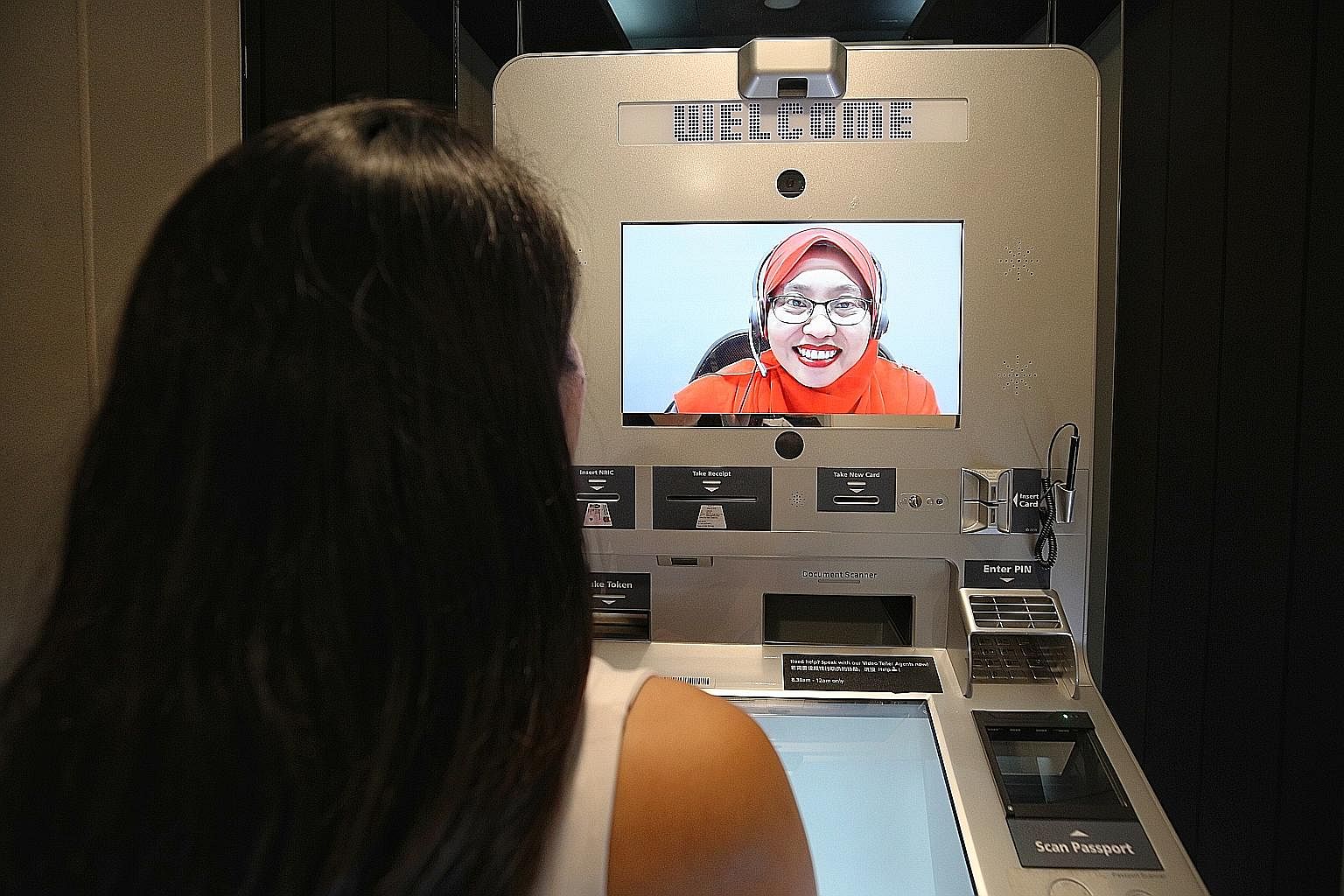
FOUR KEY RECOMMENDATIONS
The Government will do its best to support older workers and the businesses that employ them. Last year, the Ministry of Manpower, MOM, set up a Tripartite Workgroup on Older Workers to study the issue. It made four key recommendations. First, to raise the retirement age from 62 today to 65. Second, to raise the re-employment age from 67 today to 70. Third, to increase CPF contributions for older workers. Fourth, to achieve all this in gradual steps, by about 2030. I think these are sensible recommendations. The Government accepts them in full.
Let me explain them a little more, and I will start with CPF contributions. Today, CPF contribution rates for workers begin to taper down after the workers turn 55. We will raise the rates for workers above 55. We will take the first step in 2021. And we will take subsequent steps after that. The whole process will take 10 years or so, about there, but it depends on economic conditions.
By the time we are done, those 60 and below will enjoy the full CPF rates. The CPF rates will only begin to taper down after 60, and level off after 70. So this is the first change - to increase CPF for older workers gradually over the next 10 years or so.
Next, in 2022, we will start to raise both the retirement age and re-employment age for all employers. The retirement age will go from 62 - which is what it is today - to 63 in 2022, and eventually to 65 by 2030. The re-employment age will go from 67 - which is where it is now - to 68, also in 2022, and eventually to 70, by 2030.
Therefore, by 2030, we should reach our first and second objectives, which means retirement age goes to 65, and re-employment age goes to 70.
The Government will help businesses to adjust to these new arrangements. We will implement a support package for them and Deputy Prime Minister Heng Swee Keat will announce them in next year's Budget.
As a major employer ourselves, the Government will take the lead for public officers. The Public Service will raise its retirement and re-employment ages one year earlier, in 2021 instead of 2022. I encourage private-sector companies which can do the same, to do so also.
All these changes - to the retirement age, the re-employment age, and the CPF rates - will support older workers to continue working longer and to be more financially independent.
Let me add one last point here, to be absolutely clear: we are not making any changes to CPF withdrawal policies or CPF withdrawal ages. You can still take out some money at age 55. And you can still start your CPF payouts from age 65. All that remains exactly the same.
PREPARING FOR CLIMATE CHANGE
Next, let me talk about renewing our city and our home for the next century. I will start with climate change. Climate change may seem abstract and distant for many of us. But it is one of the gravest challenges facing humankind. Our young people instinctively appreciate the seriousness of the issue. When the National Youth Council recently asked young people what their vision was for Singapore's future, many spoke about the environment. Already, the Earth's average temperature has gone up by 1 deg Celsius compared to pre-industrial times, over 100 years ago. One deg Celsius does not sound like much, but it is very significant. Furthermore, temperatures are continuing to rise, faster and faster. Ice sheets in Greenland and Antarctica are melting into the oceans, and this is raising sea levels around the world. The United Nations currently projects that sea levels will rise by up to one metre by the end of this century, about three feet, just 80 years from now. But the scientists' estimates have been going up. So sea levels may quite possibly rise higher and faster than that.
Global warming is also making the weather more extreme. Droughts are getting more severe and prolonged. Rainfall and storms are becoming more intense.
Singapore is already feeling the impact. Our weather is palpably hotter. Rainstorms are heavier. And this will very likely worsen over the next few decades, within the lifetimes of many of us. A recent Swiss study found that by 2050, just 30 years from now, several cities in the world will experience unprecedented climate shifts. And it found that one of them will be Singapore.
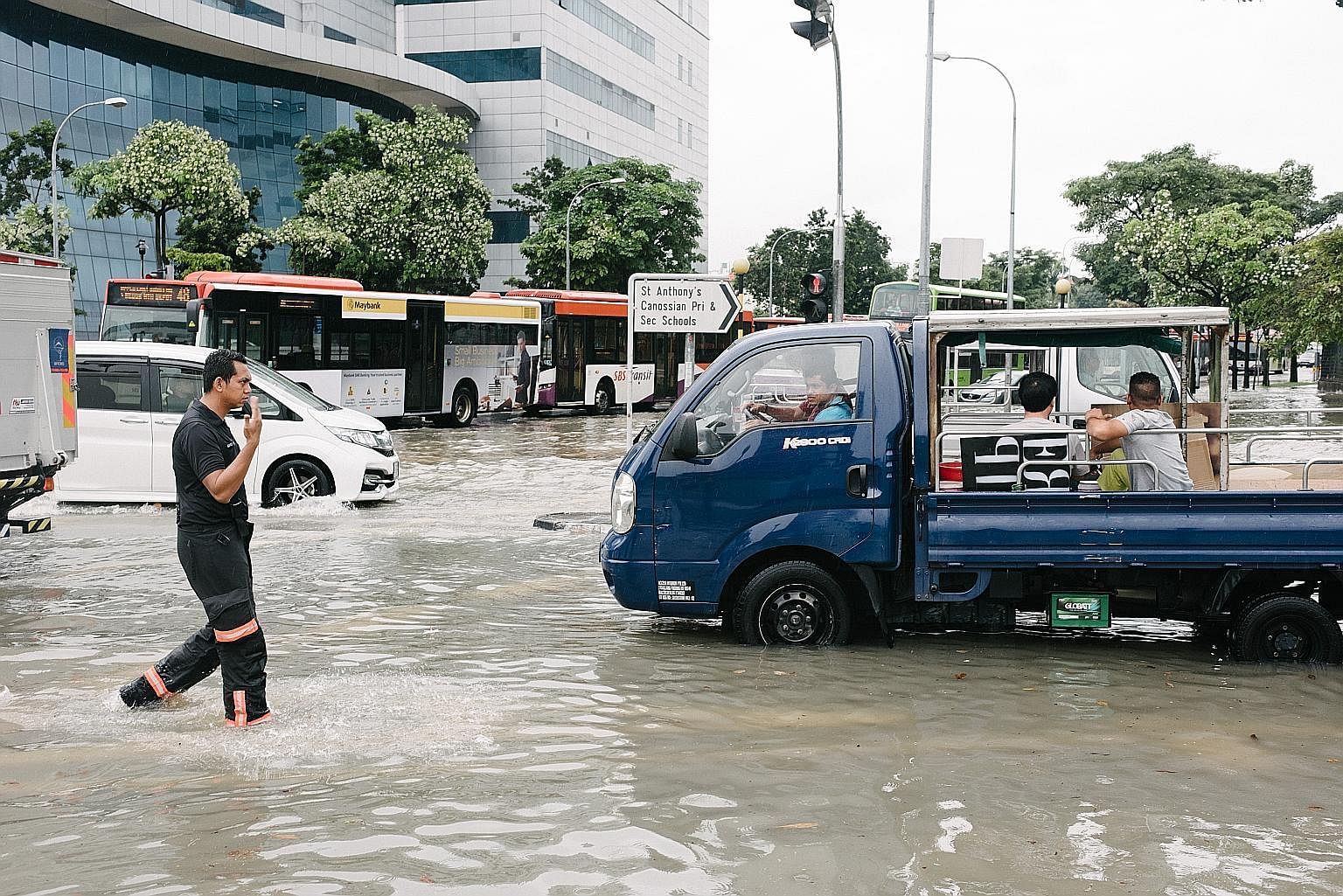
We must prepare for the impact of climate change on Singapore. There are many risks and consequences. New diseases, more frequent pandemics, food shortages, forced migration of displaced populations and even wars. Because we are a low-lying island, Singapore is especially vulnerable to one grave threat, and that is rising sea levels.
In the 1960s and 1970s, floods were common in Singapore, especially during the rainy season. When we had high tides, monsoon drains in low-lying parts of Singapore would fill up almost to the brim, even if it was not raining. And if it did rain, it would flood. These old flooding problems are now largely resolved. We improved the drainage system. We required buildings to be built on higher platforms, at least three metres above the mean sea level.
Three metres is not actually that high, because at high tide, the water can go up as high as two metres above the mean sea level. That leaves just a one-metre buffer to cope with other factors. For example, heavy rain. Because of this one-metre buffer, we have managed to deal with our flooding problems thus far. But, with global warming, if sea levels rise by one metre, our buffer is gone.
UNDERSTAND, MITIGATE AND ADAPT
So what can we do? Three things: understand climate change, mitigate climate change and adapt to climate change.
Let me explain them one by one.
First, we have to understand what climate change means specifically for Singapore. So we have set up a Centre for Climate Research Singapore, CCRS. It has a team of scientists and meteorologists, and supercomputers to model the weather and do research. CCRS is cooperating with its counterparts in neighbouring countries to study in more detail how climate change is affecting South-east Asia. They are finding that Singapore, being near the Equator, is more vulnerable to climate change than the global model suggests.
Second, we must mitigate climate change. What does mitigate mean? It means we must do our part to reduce CO2 emissions. Singapore has joined international efforts to reduce emissions. We are part of the Paris Climate Agreement, and we have committed to slow down and ultimately cap our CO2 emissions by around 2030.
To help achieve this, last year, we introduced a carbon tax. Each of us can do our bit to promote sustainability and mitigate climate change. Like remembering to switch off the lights, reducing waste and reusing and recycling more.
In Singapore, we generate a huge amount of waste - whether from excessive packaging, food waste or electronic waste. These all have to be disposed of, and often incinerated, which then generates more CO2. Our landfill is on Pulau Semakau. But that will eventually fill up, and then we will need Bukit Semakau, and then Gunung Semakau! So we have to find a sustainable solution.
Although Singapore may not be able to stop climate change by ourselves, we can contribute to solutions, and we must do our fair share. Then we can be credible when asking others to reduce their emissions too, and work towards a global solution to climate change. Unfortunately, such a global solution is still very far off. So we must work for the best, but be prepared for the worst.
SMALL BUT IMPORTANT STEPS
Therefore, the third thing we must do, is to adapt to climate change, and especially rising sea levels.
We will need local measures to protect individual buildings and developments - and we have been doing this. For example, we have built MRT stations with elevated entrances. When you enter an MRT station, you need to climb up a few steps before you go down the escalator. This is flood protection for our MRT system. If we need... our steps to be built higher, we will do that one day.
We also require new developments to be built on higher platforms; instead of building three metres above mean sea level like before, they must now be at least four metres above mean sea level.
For critical infrastructure like Changi Airport Terminal 5 and Tuas Port, we are raising the platforms even higher, at least five metres above mean sea level.
But local measures will not be enough. We have many older buildings. These cannot be lifted, or transported to higher ground. In fact, large parts of Singapore are low-lying, and we need to protect these low-lying areas as a whole... because roads and trains run through the low-lying areas, hospitals, schools, and workplaces are all there. We cannot lose a big chunk of our city and expect the rest of Singapore to carry on as usual. Therefore, beyond localised measures, we need to protect entire areas, and the way to do that is to build coastal defences.
COASTAL DEFENCES
We have studied our whole coastline in detail, and we have divided it into different segments. Some are more vulnerable than others, and we need different strategies to protect each of them, and we will have to prioritise the work, starting with the more critical segments, and in particular, City-East Coast and also Jurong Island.
I will talk about the City-East Coast, which is a long stretch comprising the city area, and the eastern coastline. Let's look at the city area first. We built the Marina Reservoir and Marina Barrage to protect the city area from flooding.
Many of us enjoy visiting the Marina Barrage, to picnic and fly kites on top of the Pump House, especially if we have little kids. But PUB did not build the Pump House for kite flying. Its real purpose is to house seven giant pumps. That is why it is so tall. When it rains heavily during high tide, these pumps pump water out of Marina Reservoir into the sea, so that rain falling in the city area can then drain into Marina Reservoir. When sea levels rise, one Pump House will not be enough. We will need to build a second pump house on the opposite end of the Barrage. PUB has planned for this.
POLDERS AND ALTERNATIVES
So that's for the city. For the eastern coastline, we will need possibly other solutions. We have looked at other countries for inspiration. In particular, we studied the Netherlands.
The word "Netherlands" means "low-lying lands". Half of the country is at most one metre above sea level. In fact, one-quarter (27 per cent) of their land is below sea level, what the Dutch call "polders". This is land that the Dutch have reclaimed from the sea. They first build a seawall in the water, enclose an area. Then they pump out the water behind the seawall to create dry land, and that dry land can be lower than sea level - and they have to keep pumping water out.
The Dutch are famous for their windmills. But do you know why the Dutch originally built windmills? It was not to take tourist pictures. It was to pump water out from polders and keep the land dry. I do not think windmills will do very well in Singapore. But, polders are a serious option for us. We are building a small polder on Pulau Tekong, to gain some experience in operating one. The new land will be used for SAF training.
Polders are one option to protect our eastern coastline. Instead of just building a seawall along the coastline, you extend out with a polder, build a seawall further out, you not only protect existing low-lying areas. But you extend out and create more land reclaimed from the sea which we can use for housing and other valuable purposes. That is one possible solution for the East Coast, to build polders along the coastline.
But there are other alternatives. For example, we could reclaim a series of islands offshore, from Marina East all the way to Changi. We join up the islands, connect them with barrages, and create a freshwater reservoir, which will be similar to Marina Reservoir. This solution will make PUB very happy because we will have another big reservoir and it will enhance our water resilience. We will examine all the options carefully, and when the time comes, we will decide what is the best way to do it.
This problem has good engineering solutions, although they will all cost money. How much will it cost, to protect ourselves against rising sea levels? My guess is probably $100 billion over 100 years, quite possibly more.
If we only have 10 years to solve the problem, we will not have enough time or resources to do it. But because this is a 50-to 100-year problem, we can implement a 50-to 100-year solution. In Singapore, for long-term problems, we can make long-term solutions. Not everywhere, but in Singapore, yes, we can.
AN EXISTENTIAL MATTER
We should treat climate change defences like we treat the SAF - with utmost seriousness. Work steadily at it, maintain a stable budget year after year, keep your eye on the target and do it over many years and several generations. That way, we can afford it, and when we need it, we will have it ready.
Both the SAF and climate change defences are existential for Singapore. These are life and death matters. Everything else must bend at the knee to safeguard the existence of our island nation.
There is one difference between the two. With the SAF, we hope never to go to war. If you have a strong SAF, you may deter threats and avoid having to go to war. But with climate change, we know for sure sea levels will rise. The only uncertainty is whether they rise a few decades earlier, or a few decades later.
Therefore, we will implement our climate change plans progressively, and keep them flexible. But we must start now and sustain the effort, as the Dutch have done over the centuries, and as we have done with the SAF.
We must make this effort. Otherwise, one day, our children and grandchildren will be ashamed of what our generation did not do.
THE GREATER SOUTHERN WATERFRONT
Beyond protecting ourselves from rising seas, we also have long-term plans to remake and take full advantage of our coastline. One of these plans is the Greater Southern Waterfront (GSW). The GSW comprises 30km of our southern coastline, from Gardens by the Bay East all the way to Pasir Panjang. It contains 2,000 hectares of land: six times the size of Marina Bay and double the size of Punggol.
The GSW includes the PSA city terminals in Tanjong Pagar, Keppel and Brani. It also includes the Pasir Panjang Terminals. By 2027, the city terminals will move to Tuas. Later on, in 2040, the Pasir Panjang Terminal will also go to Tuas Port. This will free up prime land for re-development. It will be an opportunity to reshape the GSW into a new place to live, work and play.
Let me start with "live". Keppel Club golf course is close to two MRT stations and Labrador Nature Reserve. The lease is expiring in two years' time, so this will be one of the first GSW developments. There is enough land here to build 9,000 housing units - HDB and private housing with waterfront promenades, with greenery and open spaces. And that is just the start, because there is space and land for public and private housing elsewhere in the GSW too. With GSW the size of two Punggols, you get a sense of the possibilities. Think of it as Punggol by the Bay.
Next, I go on to "work" - the commercial areas. Several big companies already have offices near Labrador Park. Such as Google, Cisco and Unilever. We will develop more office space in the GSW. People can work near where they live, and live near where they work. This will create life and activity both during the day and at night.
Finally, I come to "play" - the fun part. There are many possibilities for fun and recreation. We will start by redeveloping the two old power stations in Pasir Panjang. They used to supply electricity back in the 1960s, but were decommissioned long ago. We can find creative new uses for them. Just like how we made St James Power Station, near Vivo City, into a nightlife destination.
Next, after Brani Terminal moves out, we can develop Pulau Brani together with Sentosa. We will build new attractions on Brani, just like we have Universal Studios on Sentosa. We will also revitalise Sentosa's beach areas and expand its nature and heritage trails, to keep its island character. We will also link up the GSW with all the surrounding green areas, so that you have a whole connection from West Coast Park to East Coast Park, and also connect up the Rail Corridor and Sentosa. With a new green heart in the centre, Singapore will be even more of a City in a Garden.
BUILDING SINGAPORE: THE WORK OF GENERATIONS
Our city today comprises multiple layers and the imprints of different eras. The Greater Southern Waterfront will add yet more layers to the city.
Over the centuries, people have come to Singapore from different lands. Bringing with them their identities, cultures and beliefs. Their hopes and dreams, their passions and aspirations. Slowly, they wove these strands together to become Singaporeans and to build today's Singapore.
The layout and architecture of our city reflects this richness and complexity. Parts of our Civic District and Central Business District are still laid out according to the first town plan that Raffles and his team drew up, 200 years ago. Many of the colonial buildings remain, often restored and repurposed, so the former Supreme Court and City Hall have become the National Gallery Singapore. Over two centuries, we have built and rebuilt generations of buildings. Today, we have created a distinctive city skyline, and a vibrant waterfront all round Marina Bay.
When we first reclaimed Marina East, Central and South 40 years ago, they were empty - a blank slate. For some years, we left the new land fallow. Definite plans only came later, as we developed a clearer sense of what the city needed, and began putting the building blocks in place.
Now a new downtown is taking shape in Marina South, anchored around Marina Bay Financial Centre and Marina Bay Sands. Marina Bay is still far from fully developed. Meanwhile, we are already looking ahead, for our next major move.
Our modern port dates back to Raffles, who recognised Singapore's qualities as a natural harbour. Nearly 50 years ago, we converted the wharves in Tanjong Pagar into our first container terminal.
In 1991, as Tanjong Pagar reached its limits, we made a major decision: to reclaim land in Pasir Panjang to build a new container terminal. At that time, PSA was handling six million containers a year - they call them TEUs (twenty-foot equivalent units). But PSA had audacious plans: to build a port to handle six times that number, 36 million TEUs.
Building Pasir Panjang Terminal was a considerable act of faith. But we backed PSA up, and PSA delivered: last year, it handled 36 million TEUs and more. Now, we are making yet another leap, building Tuas Port, where PSA can double its volumes. When PSA moves out of the city and Pasir Panjang terminals, these old spaces will once again be vacant - another blank slate. A new generation will have another opportunity to imagine and to build here some part of their vision for Singapore.
Over the years, I have talked about many major projects at National Day Rallies. These are all progressively taking shape. In 2013, I described Jewel at Changi Airport. At that time, Jewel was just a concept and an ambition. Now we have completed it, on time and within budget. In the same way, we are realising our other ambitious plans. Punggol Digital District, Jurong Lake District, Changi Terminal 5, redevelopment of Paya Lebar Airbase, Tuas Port and the Greater Southern Waterfront.
All these will not be done in a decade, or even in one generation. There will be space for successive generations to fill with their hopes and dreams. Each new generation will leave their mark on our city, as their predecessors have done.
CONCLUSION
This Bicentennial year, as we commemorate our history and progress, we also commit ourselves to improve on what we have, and build a better Singapore for our children. All this depends on Singaporeans remaining one united people, and having an honest and capable government working together with you, for you, for Singapore.
The next few years will be very demanding. We have to hand over smoothly to a new generation of leaders, and continue to strive to realise our ambitions. My team will work with you to build this jewel of a nation, so that Singapore will always be a vibrant, thriving city where opportunities are open to all, and our children and their children will have a bright future.
Let us strive together to create this future. Let us unite as one nation to build tomorrow's Singapore.
